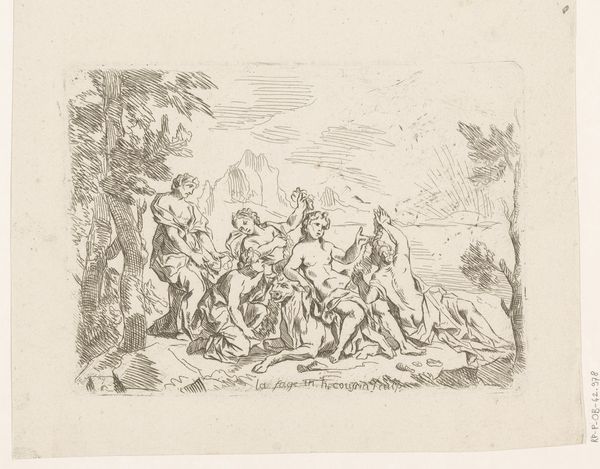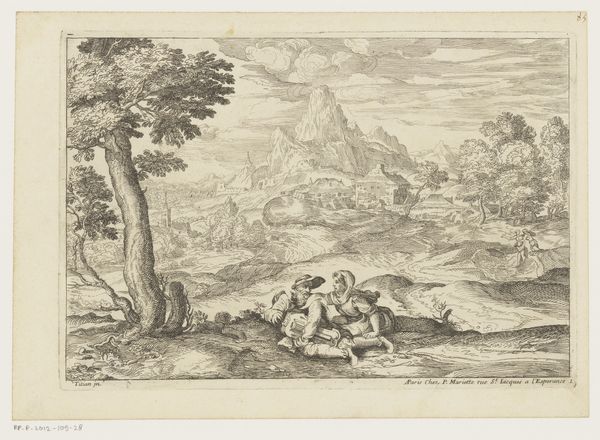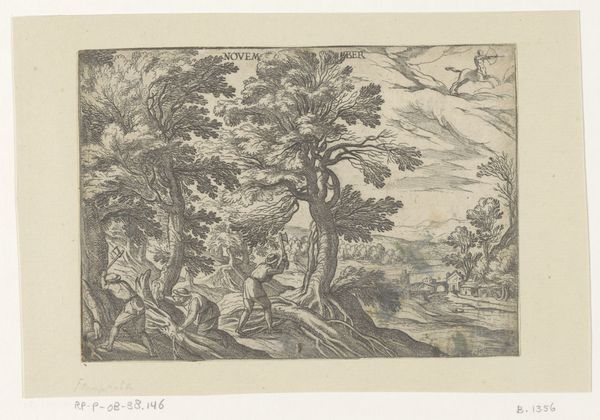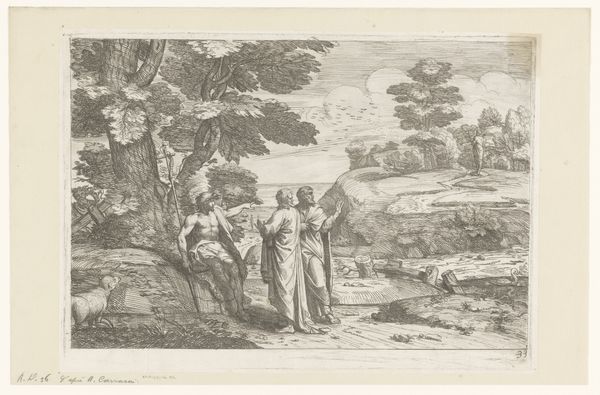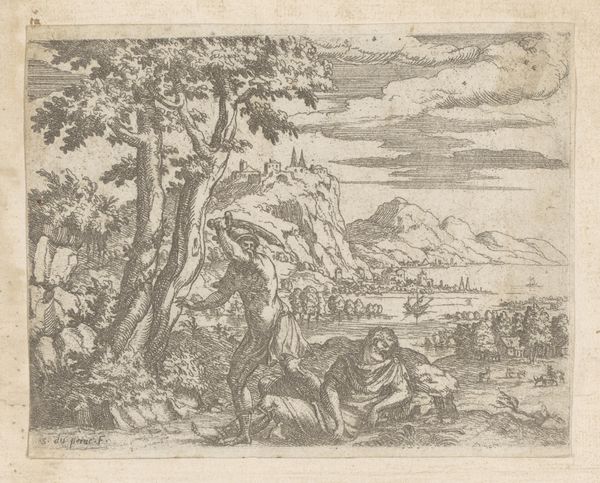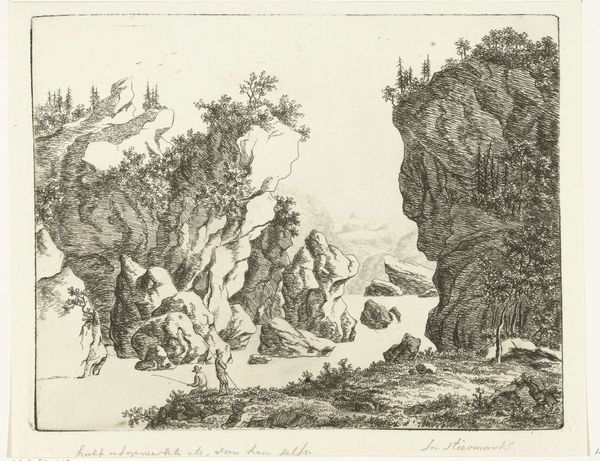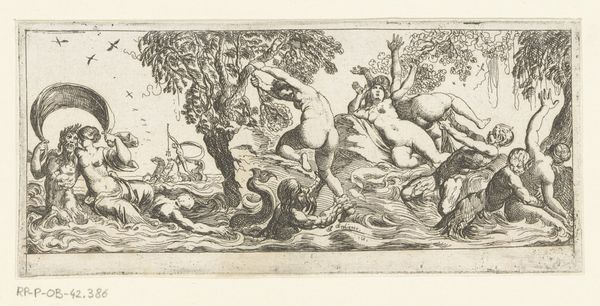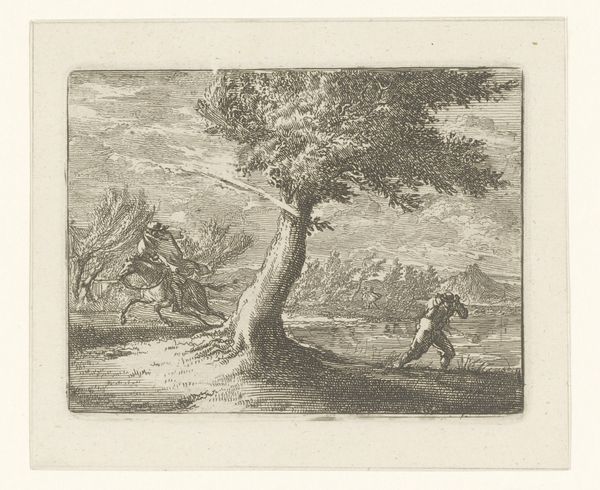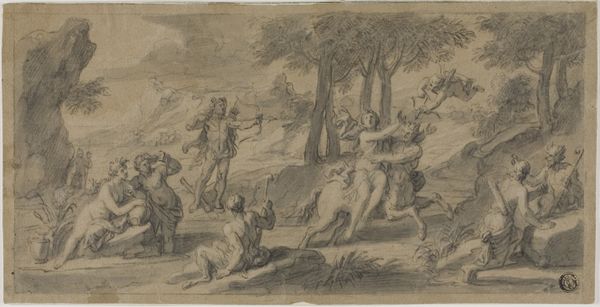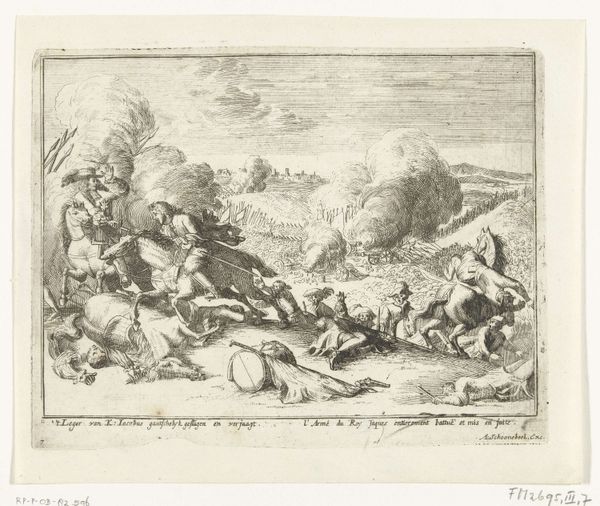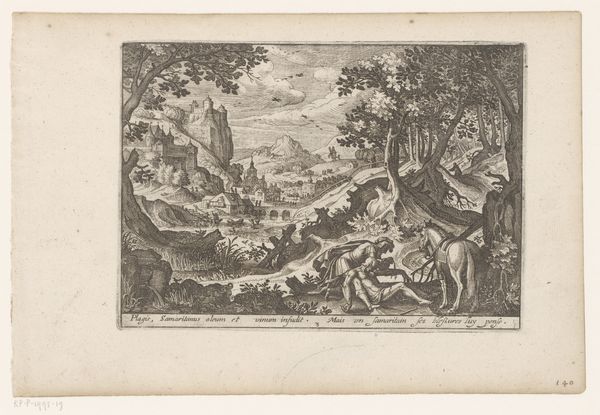
print, engraving
#
baroque
# print
#
old engraving style
#
figuration
#
line
#
history-painting
#
nude
#
engraving
Dimensions: height 102 mm, width 158 mm
Copyright: Rijks Museum: Open Domain
Curator: Here we have "Loves of the Gods", an engraving dating from 1686 to 1704, by Marc Christoph Steudner. Editor: It’s intensely dramatic, even for an engraving. Look at those agitated lines creating form out of near chaos! What’s your read on the composition, and how does the chosen medium support its creation? Curator: Engraving lends itself perfectly to this level of detail and those precise, forceful lines. Note how the artist varies the depth and density of the lines to suggest form and shadow, especially on the bodies and the rearing horses on the left. Steudner’s use of line not only defines shapes, but it also evokes a sense of dynamism – of relentless activity. I am drawn to how this evokes the historical treatment of classical stories within early printmaking and its association with the cultural currency of art itself, through accessible dissemination. Editor: The medium, particularly printmaking, historically broadened access to images but also enforced certain hierarchical views and values, even within supposedly universal narratives. What I find intriguing is how the embrace of nudes can act as sites of political as well as personal interpretation. Here it strikes me how those idealized forms still perpetuate, despite moments of perceived egalitarian access, deeply entrenched standards of beauty that exclude many bodies, don’t you think? Curator: While those issues do undoubtedly persist even into Steudner's process, I tend to look here to how materiality underscores artistic labour. See here, the lines that define muscles also point to countless hours, precise training, and dedicated studio practice of craft. Editor: Right, but is such rigorous practice truly separate from what narratives those aesthetic traditions historically served? The very choice of subject matter reinforces certain mythologies tied to specific class and gender dynamics! Curator: It shows how historical artwork becomes valuable in multiple ways across history, regardless of their impact. Editor: So perhaps understanding both its construction and its impact lets us responsibly value an object for more inclusive considerations.
Comments
No comments
Be the first to comment and join the conversation on the ultimate creative platform.
